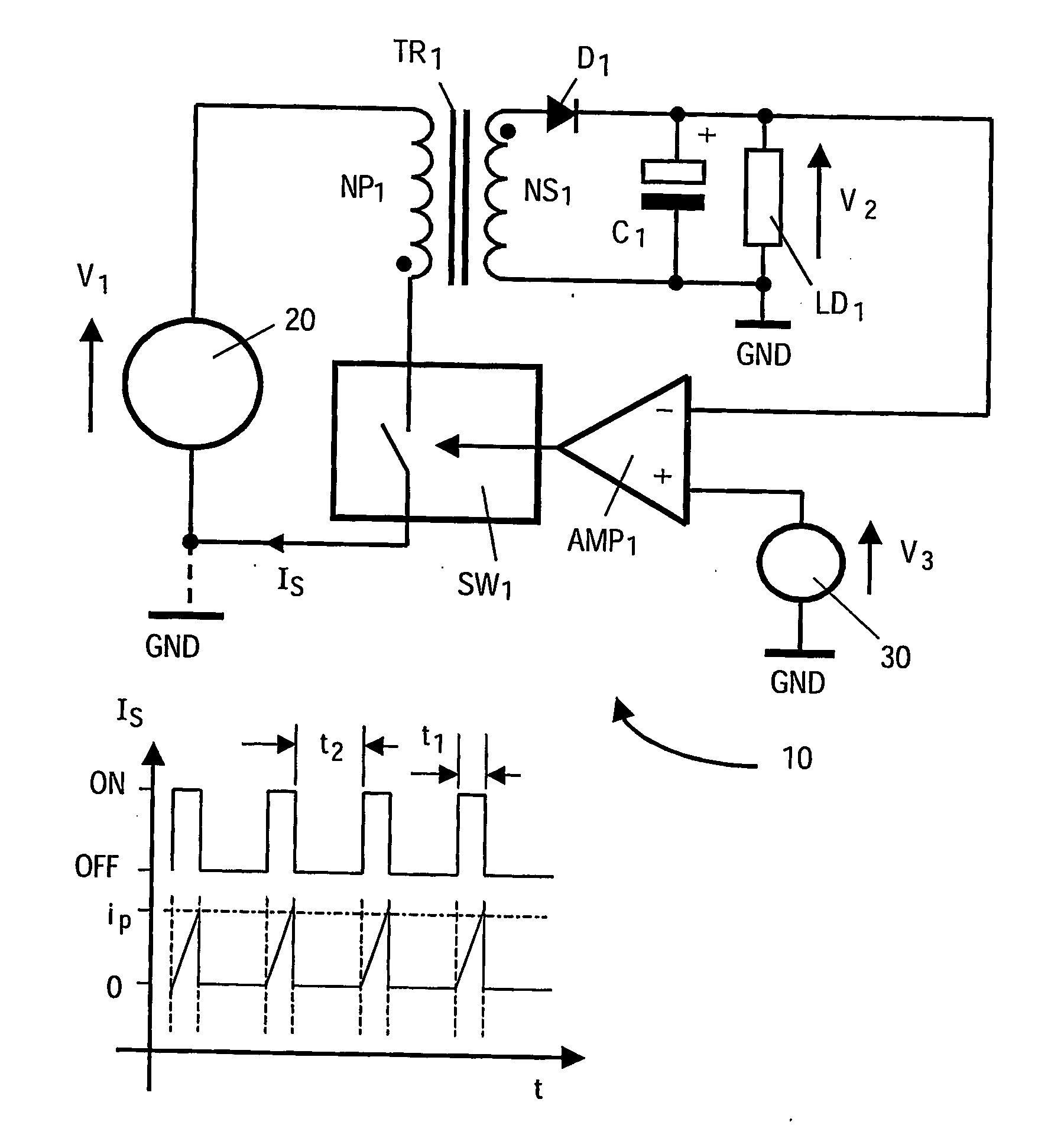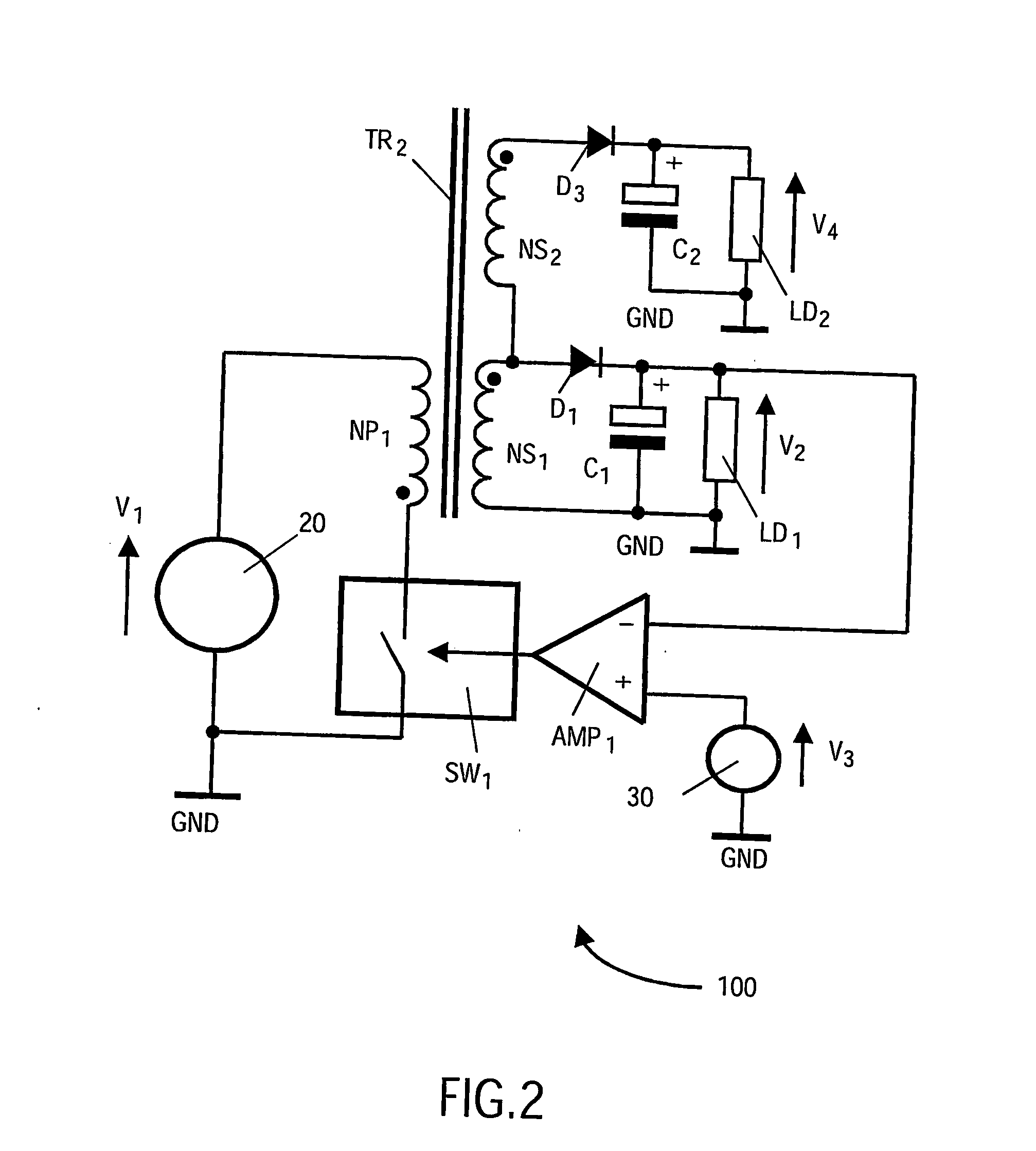Switch mode power supply apparatus with multiple regulated outputs and a single feedback loop
a power supply apparatus and output technology, applied in the direction of electric variable regulation, process and machine control, instruments, etc., can solve the problems of high manufacturing cost of foil wound transformers, unsatisfactory smps 100/b> performance, and easy reduction of link current, so as to reduce manufacturing cost and complexity of the apparatus, and be potentially robust
- Summary
- Abstract
- Description
- Claims
- Application Information
AI Technical Summary
Benefits of technology
Problems solved by technology
Method used
Image
Examples
Embodiment Construction
[0049] As described in the foregoing, the inventor has appreciated that an aforementioned contemporary flyback-mode switch mode power supply apparatus (SMPS) 100 illustrated in FIG. 2 provides an unsatisfactory quality of regulation at its additional output designated by V4; such unsatisfactory regulation is illustrated graphically in FIG. 3. Whereas the inventor has appreciated that the SMPS 100 is a conventional logical development from an aforementioned SMPS 10 illustrated in FIG. 1, the inventor has devised an alternative first flyback-type converter switch mode power supply apparatus (SMPS) according to the invention, the SMPS indicated generally by 200 in FIG. 4.
[0050] The SMPS 200 includes an aforementioned transformer TR1 as employed in the contemporary SMPS 10 together with its associated switching device SW1, its feedback control amplifier AMP1 and its voltage reference 30. An aforementioned primary winding NP1 of the transformer TR1 is connected at its first terminal to ...
PUM
 Login to View More
Login to View More Abstract
Description
Claims
Application Information
 Login to View More
Login to View More - R&D
- Intellectual Property
- Life Sciences
- Materials
- Tech Scout
- Unparalleled Data Quality
- Higher Quality Content
- 60% Fewer Hallucinations
Browse by: Latest US Patents, China's latest patents, Technical Efficacy Thesaurus, Application Domain, Technology Topic, Popular Technical Reports.
© 2025 PatSnap. All rights reserved.Legal|Privacy policy|Modern Slavery Act Transparency Statement|Sitemap|About US| Contact US: help@patsnap.com



